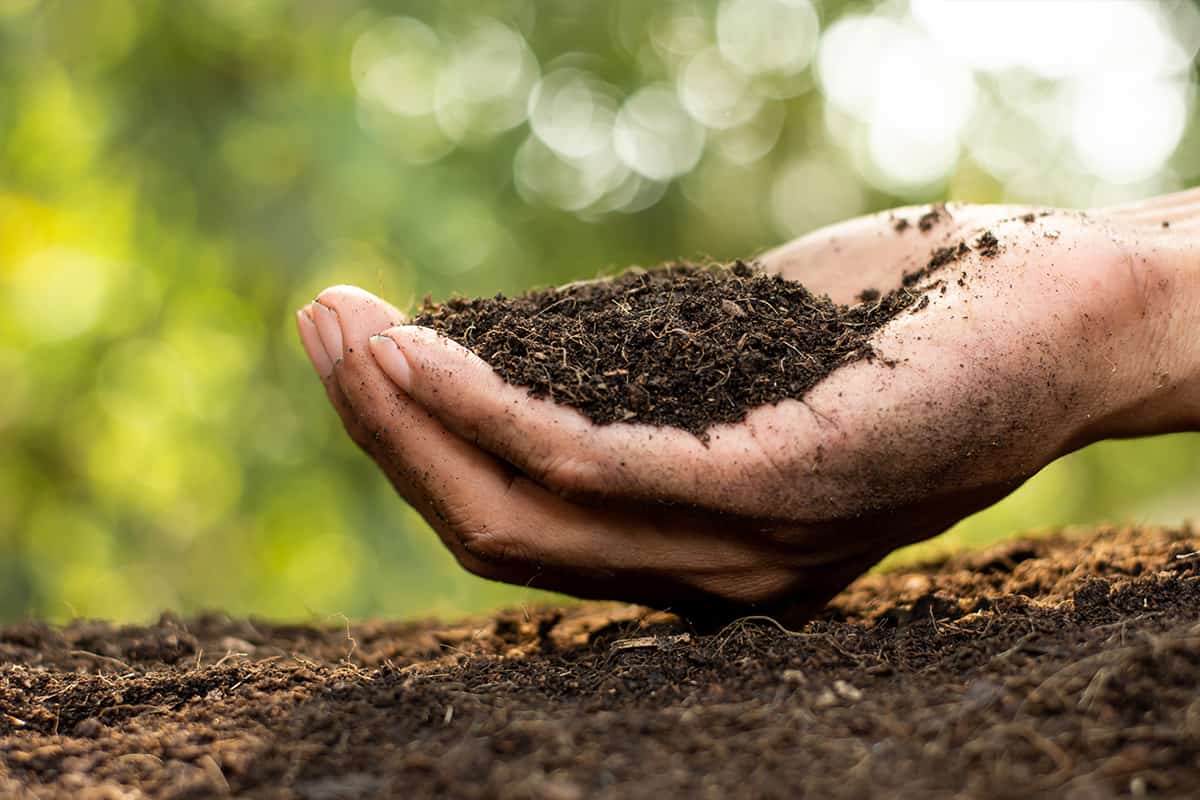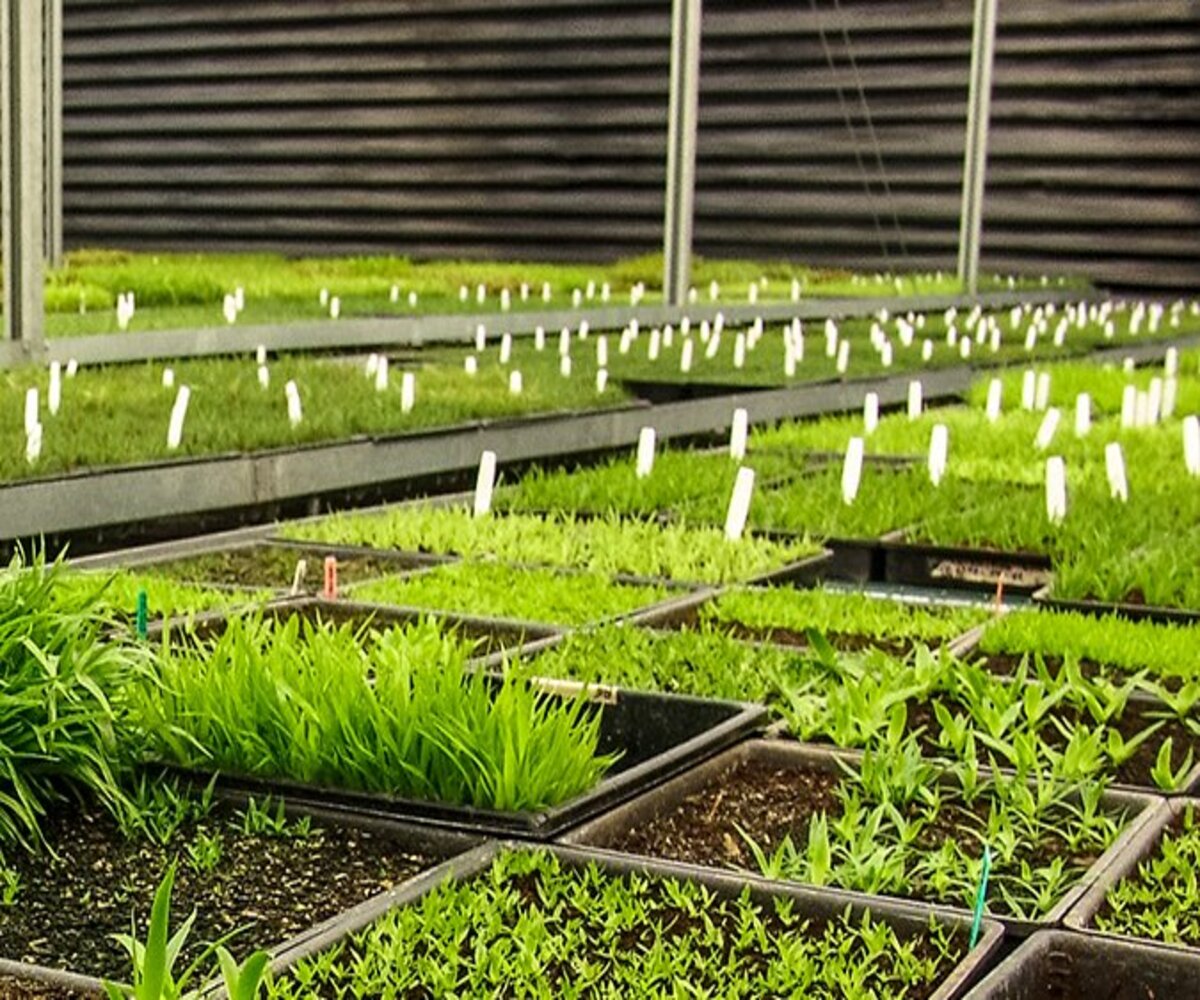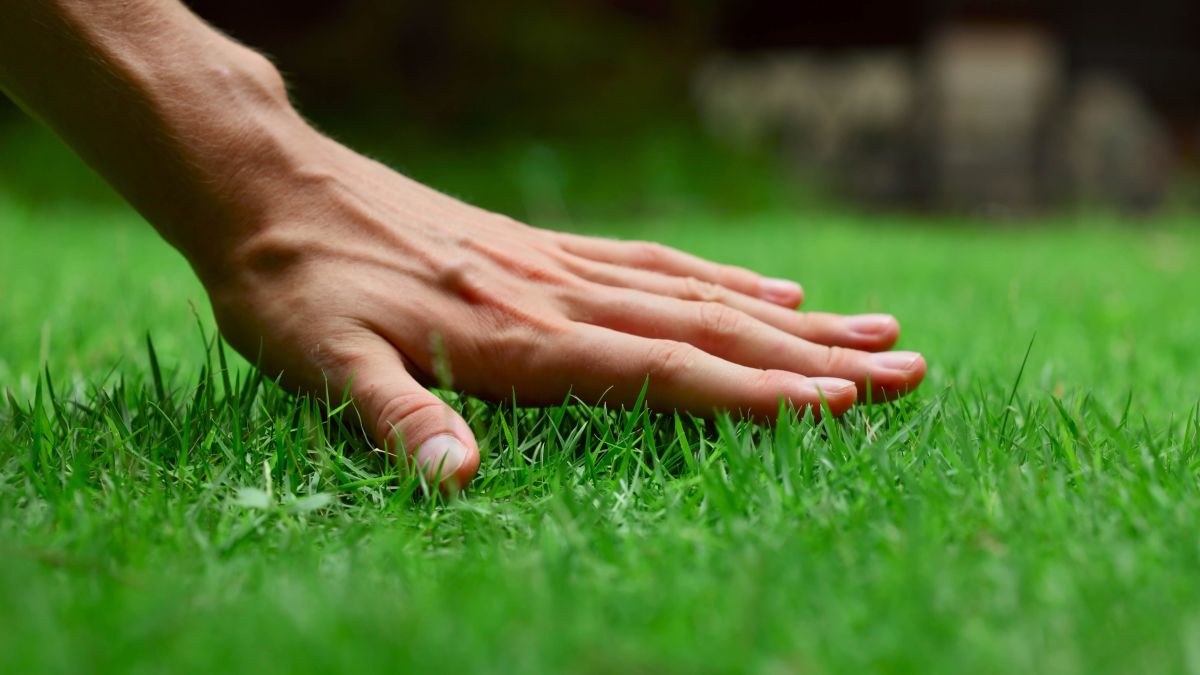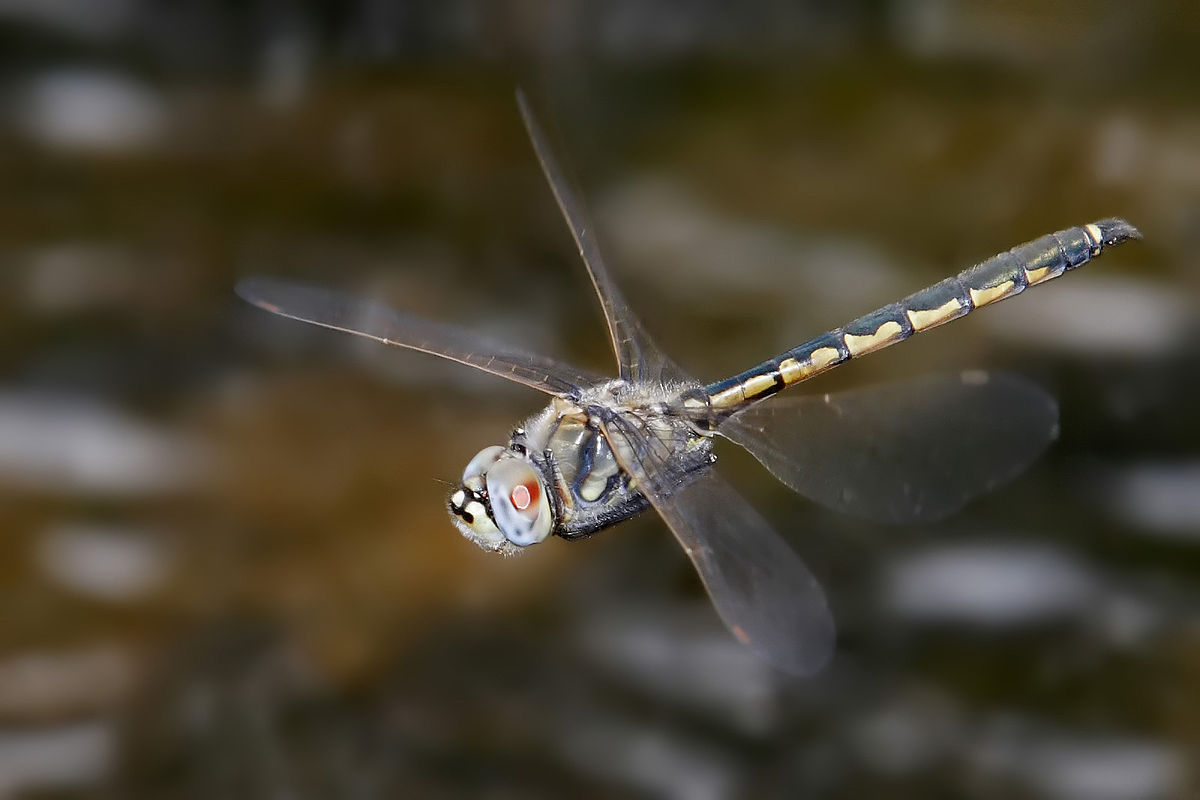Home>Gardening News and Trends>Latest News>What Insects Make Mud Nests
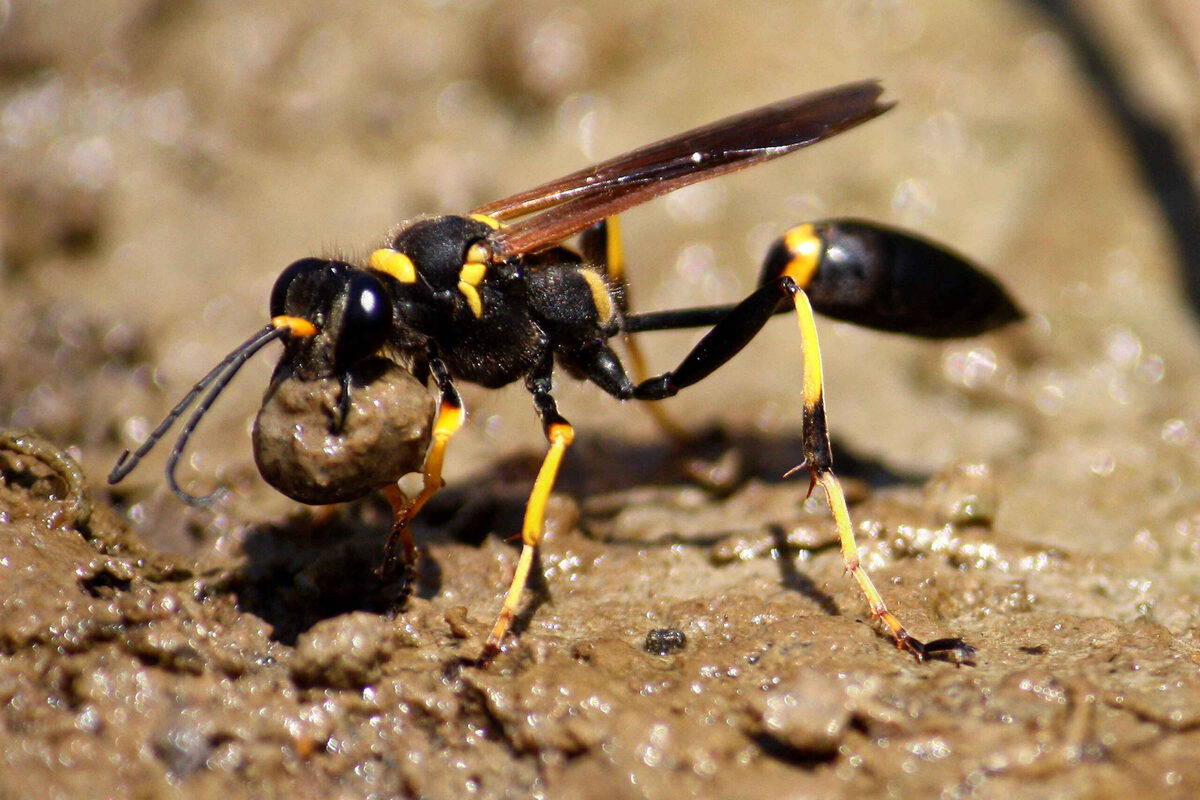

Latest News
What Insects Make Mud Nests
Modified: February 6, 2024
Discover the latest news on insects that make mud nests. Learn about the fascinating behaviors and characteristics of these creatures in this informative article.
(Many of the links in this article redirect to a specific reviewed product. Your purchase of these products through affiliate links helps to generate commission for Chicagolandgardening.com, at no extra cost. Learn more)
Table of Contents
Introduction
Mud nesting insects are a fascinating group of creatures that exhibit unique behavior when it comes to constructing their nests. These remarkable insects utilize mud as their primary building material, creating intricate structures that serve as homes for themselves and their offspring. The process of constructing mud nests involves a combination of instinct and skill, resulting in resilient and functional dwellings.
Throughout the natural world, various insect species have adopted the strategy of building mud nests. These nests not only serve as protection from predators and harsh environmental conditions but also provide a suitable environment for the survival and development of their young. Mud nesting insects can be found in different habitats globally, showcasing the adaptability and resourcefulness of these remarkable creatures.
This article will delve into the world of mud nesting insects, exploring the types of insects that construct these nests, their nesting behaviors, the benefits of mud nests, and the threats they face. By gaining a deeper understanding of these mud nest builders, we can appreciate the intricate and fascinating world of these insects and their contributions to the ecosystem.
Mud Nesting Insects
Mud nesting insects are a diverse group that encompass various species belonging to different taxonomic orders, including Hymenoptera (bees, wasps, and ants), Odonata (dragonflies and damselflies), and some species of beetles and spiders. While the specific behaviors and nesting habits may vary among these different groups, they all share a common reliance on mud for constructing their nests.
These insects have evolved unique strategies to utilize mud in their nest building processes. They may collect mud from nearby water sources or mud deposits, or they can create mud by mixing soil particles with their saliva or other bodily secretions. By manipulating the mud’s consistency and shaping it into various forms, they create sturdy and intricate nests that meet their specific needs.
Each mud nesting insect species has its preferred habitat and unique nesting requirements. Some species prefer to nest in crevices and holes, utilizing mud to seal off and protect their nesting chambers. Others construct free-standing structures, such as mud tubes or chimney-like towers, which provide a safe space for their eggs and larvae.
The size and shape of mud nests can also vary greatly. Some mud nests are small and discreet, blending seamlessly with the surrounding environment, while others can be large and elaborate, serving as conspicuous architectural marvels. Regardless of their size, these nests are meticulously designed to fulfill several crucial functions, including protection, thermoregulation, and providing resources for the offspring’s development.
The ability to construct mud nests is often innate in these insects, with specialized glands or structures enabling them to manipulate and shape the mud effectively. They may also exhibit behaviors such as carrying mud pellets or sculpting the wet mud into the desired form using their mandibles or specialized body parts.
Types of Insects that Make Mud Nests
There are several types of insects that are known for their ability to construct mud nests. These insects come from various taxonomic groups and exhibit unique nesting behaviors. Let’s explore some of the most common types of insects that make mud nests:
- Hymenoptera: Bees, wasps, and ants are well-known for their mud nesting habits. Solitary bees, such as the Mason bees and Leafcutter bees, construct their nests by utilizing mud as a building material. Mud dauber wasps are another notable example, creating tube-like nests made of mud, where they lay their eggs and store paralyzed insects as food for their larvae. Ants also utilize mud to build intricate tunnel systems and chambers within their colonies.
- Odonata: Dragonflies and damselflies, belonging to the order Odonata, are skilled aerial acrobats and also exhibit mud nesting behavior. They typically prefer aquatic environments and use mud to construct their nests near water sources. The female dragonfly or damselfly will lay her eggs either directly in the mud or attach them to plants or other structures near the water. The hatched larvae then develop in the water until they are ready to emerge as adults.
- Beetles: Some species of beetles also engage in mud nesting. The digger beetles, also known as Cicindelidae, are known for their impressive burrows made in mud or sandy soil. These burrows serve as both a shelter and a hunting ground, as the beetles wait for prey to pass by.
- Spiders: While spiders are typically associated with their silk-spun webs, some species of spiders also demonstrate mud nesting behavior. The raft spiders, for example, construct flat nests made of silk and mud, which they anchor to vegetation near water bodies. These nests allow them to glide on the water’s surface while hunting for prey.
These are just a few examples of the diverse range of insects that make use of mud in their nest construction. Each group showcases unique adaptations and strategies, highlighting the versatility and ingenuity of these insects when it comes to creating their homes.
Nest Construction
The process of nest construction in mud nesting insects involves a combination of instinct, skill, and meticulous attention to detail. While the specific techniques may differ among different insect species, there are common steps involved in the construction of mud nests.
First, the insects search for suitable mud sources, such as banks of rivers or lakes, damp soil, or even puddles. They collect the moist mud, either by scraping it off the surface or by digging into the ground. Some insects may use their mouthparts or specialized appendages to manipulate the mud and form it into the desired shape.
Once the mud is acquired, the insects begin the construction process. Depending on their nesting behavior, they may create individual cells within the nest or build a larger structure that houses multiple cells. They carefully mold the mud, adding layers and shaping it to create robust and self-supporting structures.
Some insects use a combination of mud and other materials, such as plant fibers or their own secretions, to reinforce the nest’s structure and strengthen its integrity. This additional material may be incorporated into the mud matrix or used as a lining for individual cells. The use of reinforcing materials improves the durability and longevity of the nests.
Throughout the construction process, the insects maintain a high level of precision and attention to detail. They ensure that the walls of the nest are smooth and well-sealed, preventing any unwanted leaks or intrusions. Some insect species even exhibit specific architectural designs, such as intricate patterns or grooves on the nest’s surface.
The construction of mud nests is a time-consuming process that requires patience and dedication. The insects meticulously work on their nests, adding layers, shaping the structure, and making necessary adjustments. This process can take several hours or even days, depending on the complexity of the nest.
Once the construction is complete, the insects may further modify the nest to enhance its functionality. This can include creating separate chambers for different purposes, such as nurseries for eggs or individual cells for developing larvae. They may also incorporate structural features that aid in temperature regulation, ventilation, or protection from predators.
The nest construction process showcases the remarkable abilities of mud nesting insects to manipulate their environment and create intricate dwellings that cater to their specific needs. It is a testament to their evolutionary adaptations and the ingenious ways in which they utilize mud as a building material.
Benefits of Mud Nests
Mud nests provide numerous benefits to the insects that construct them, both for their own survival and the successful development of their offspring. Let’s explore some of the key advantages of mud nests:
- Protection: One of the primary benefits of mud nests is the protection they offer. These nests serve as a physical barrier against predators, such as birds, reptiles, and other insects, minimizing the risk of predation. The sturdy and well-sealed walls of the nests provide a safe haven where the insects can retreat from external threats.
- Thermoregulation: Mud nests play a crucial role in maintaining stable temperatures for the developing offspring. The thick walls of the nests act as insulation, shielding the interior from extreme temperature fluctuations. This thermoregulation ensures that the eggs or larvae remain within an optimal temperature range, promoting proper growth and development.
- Moisture Control: For insects that rely on moist environments, such as aquatic or semi-aquatic species, mud nests help regulate the moisture levels necessary for their survival. The mud walls can retain moisture, creating a suitable microclimate within the nest. This is particularly important for species that require a moist environment for the hatching of eggs or the development of larvae.
- Resource Provision: Mud nests also serve as a valuable resource for the developing offspring. In some species, the female insect provisions the nests with food sources, such as paralyzing or storing prey items for the larvae to feed on. These provisions ensure that the larvae have a readily available food supply, increasing their chances of survival and successful development.
- Camouflage: Certain mud nests are designed to blend seamlessly with their surroundings, providing excellent camouflage for the insects and their offspring. This camouflage helps protect them from visually-oriented predators, allowing them to remain undetected and increase their chances of survival.
- Environmental Contributions: Mud nests also have ecological significance beyond the individuals that construct them. They provide shelter and microhabitats for other organisms, such as spiders, mites, and fungi, creating a complex ecosystem within the nest. Additionally, abandoned mud nests can contribute to soil fertility by breaking down and enriching the surrounding soil.
These benefits highlight the importance of mud nests in the life cycles and ecology of the insects that construct them. They not only provide essential protection and resources but also contribute to the overall functioning and biodiversity of the surrounding ecosystems.
Predators and Threats to Mud Nests
Mud nests, despite their protective design, are not immune to threats. Several predators and environmental factors pose risks to the survival of both the insects and their nests. Let’s explore some of the common predators and threats that mud nests face:
- Predatory Insects: Mud nesting insects are often targeted by other predatory insects, such as parasitoid wasps or ants. These predators may detect the presence of the nests and exploit vulnerable moments, such as during nest construction or when the female lays her eggs. They may lay their own eggs inside the mud nest, which eventually hatch and feed on the eggs or larvae of the mud nest builder.
- Birds and Reptiles: Many bird species, such as swallows and mud daubers, are adept at locating and preying upon mud nests. They may peck at or dismantle the nests to access the insects or their offspring. Additionally, certain reptiles, including lizards or frogs, can be a threat to mud nests, particularly if the nests are built within their reach.
- Environmental Factors: Environmental factors, such as heavy rainfall or flooding, can pose significant threats to mud nests. Excessive moisture can weaken the mud walls, leading to collapse or damage to the nest structure. Extreme heat or droughts can also affect the integrity of the nests and disrupt the suitable conditions required for egg incubation or larval development.
- Human Disturbance: Human activities can inadvertently disturb or destroy mud nests. Construction or landscaping projects that involve the removal of mud sources can eliminate the insects’ ability to build nests. Additionally, direct disturbance or destruction of nests by humans can negatively impact the population of mud nesting insects in an area.
- Parasites and Pathogens: Mud nests can also be susceptible to parasitic organisms or disease-causing pathogens. Parasitic wasps or flies may lay their eggs inside the nests, which can lead to the infestation and subsequent destruction of the mud nest builder’s offspring. Fungal or bacterial infections can also affect the health and survival of individuals within the nests.
These predators and threats highlight the challenges faced by mud nesting insects in maintaining the integrity of their nests and ensuring the survival of their offspring. Despite these risks, these insects have evolved various strategies, such as nest placement, defensive behaviors, or adaptations against predators and environmental factors.
Conclusion
Mud nesting insects showcase remarkable adaptability and ingenuity in constructing their nests using mud as a primary building material. These insects, belonging to various taxonomic groups, utilize mud to create intricate and functional structures that provide protection, thermoregulation, and resources for their offspring’s development.
From bees and wasps to dragonflies and spiders, the diversity of mud nesting insects illustrates the wide range of strategies and behaviors associated with nest construction. Each insect species displays unique adaptations and techniques, highlighting the versatility and resourcefulness of these creatures.
Mud nests offer numerous benefits to the insects that construct them. They provide protection against predators, ensure optimal temperature and moisture levels, and supply resources for the growing offspring. Additionally, mud nests contribute to the ecological functioning of the surrounding environment, serving as microhabitats for other organisms and contributing to soil fertility.
However, mud nests are not without their threats. Predatory insects, birds, reptiles, environmental factors, and human disturbance pose challenges to the survival of both the insects and their nests. These risks emphasize the delicate balance that mud nesting insects must navigate to ensure the success of their nests and the survival of their offspring.
Understanding the world of mud nesting insects and their nest construction behaviors enhances our appreciation for the intricate intricacies of the natural world. By recognizing the challenges they face and the importance of preserving their nesting habitats, we can contribute to the conservation and sustainability of these remarkable creatures.

